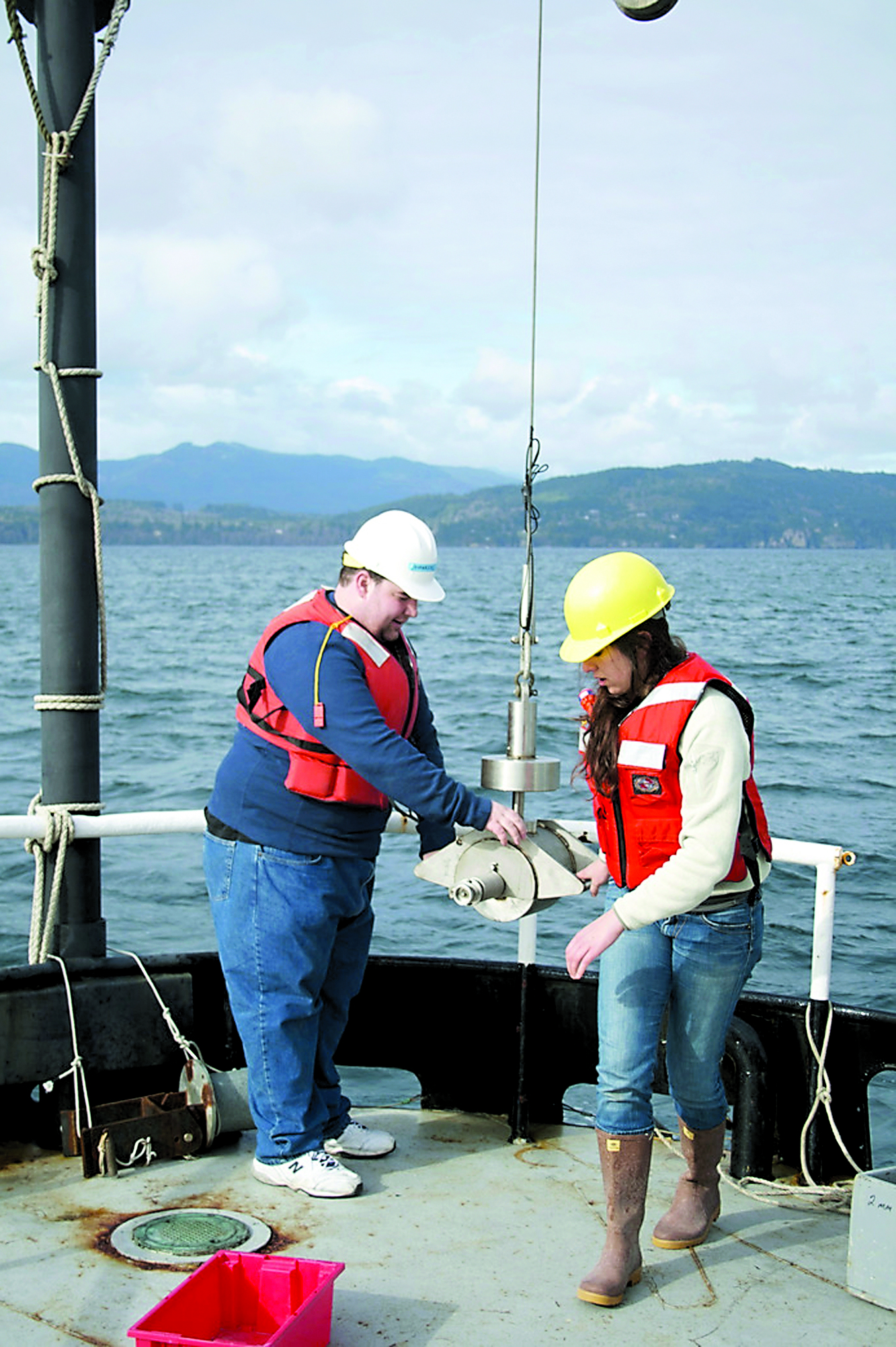PORT ANGELES — A huge plume of muddy water, fed by sediment released by dam-removal efforts, is spewing from the mouth of the Elwha River, turning some of the blue Strait of Juan de Fuca brown.
Already, scientists studying the effects of the $325 million Elwha River Restoration Project, which includes the removal of the Elwha and Glines Canyon dams, have seen early signs of some of their most hoped-for changes caused by tons of sediment being moved downstream — years before they expected anything.
Faster than expected
Everything is happening faster than expected in the project to return the Elwha River to its wild state, said scientists studying fish and sediments and the dam-demolition contractor.
“So far, that’s the story of this dam removal,” said Ian Miller, a coastal hazards specialist with Washington Sea Grant.
Miller is studying the effects of the increased river sediment on areas of the coast that have been eroding.
He said researchers hope the sediment being deposited will at least slow down the speed at which land is disappearing.
Once a sandy beach existed just east of the Elwha River mouth.
It hasn’t been there for at least the past 50 years, according to photographic evidence.
“In the last 15 to 20 years, erosion has taken 12 feet per year,” Miller said.
“If the sand keeps coming, it might start to reverse that.”
During one of the most recent trips out to the areas under study, Miller found sand beginning to accumulate on the low-tide terrace — in small amounts.
“Just seeing it down there is a big deal,” he said.
In June, fish biologists spotted wild steelhead in tributaries above the site of the former Elwha Dam.
It was much earlier than they had expected to see fish return to the river.
Another aspect moving more quickly than expected is the dam demolition itself.
Barnard Construction personnel have noted that Elwha Dam came down more quickly and easily than expected.
Dam removal began in September, and Elwha Dam was completely removed in March.
Glines Canyon Dam
As for Glines Canyon Dam, which has been reduced to about half of its initial 210-foot height, demolition was on hold throughout May and June to protect salmon runs.
During the time the fish are migrating up and down the river, work on the river is stopped to minimize the amount of sediment the fish have to deal with.
This month, crews began blasting sections from the top of the dam, increasing the flow and the sediment load carried downstream.
Another “fish window” begins in August.
Because of the large amount of sediment in the river, scientists have been concerned for the fish traveling up the river and for underwater life at the mouth of the river.
However, those studying the river believe that in the long run, the release of sediment that had been trapped behind the Elwha and Glines Canyon dams could bring even more life back to the area — and possibly even rebuild beaches and much of Ediz Hook.
Shorelines now littered with cobblestones were once long, sandy beaches supporting clams and other beach animals.
It’s more than beaches, Miller said.
Mud flats are starting to form inside the river mouth. They will, in the future, support other animal life.
“The plume is a part of putting the system back together,” Miller said.
The amount of sediment to be deposited from the dam removal is the equivalent of a 100-year or 500-year event, he said.
More to come
In the 99 years since Elwha Dam was built, the river has not been able to carry much sediment at all, effectively stopping the natural processes.
Nearly all of the sediment in Lake Mills is still trapped behind Glines Canyon Dam.
Lake Mills holds far more than Lake Aldwell did, Miller said.
Once Lake Mills is removed, the river’s sediment load will increase dramatically, he said.
It may take several years before the Elwha runs clear again, but even then, it will silt up again during heavy rain or snowmelt, which is normal for a river like the Elwha, he said.
Emily Eidam, a graduate student at the University of Washington School of Oceanography, has been studying the Strait around the mouth of the river in hopes of observing a phenomenon called “hyperpycnal flows,” in which the fresh river water is so laden with sediments it becomes heavier than sea water.
Heavy fresh water
When that happens, it dives below the salt water and forms a long slug of silty fresh water that can travel under the sea water far from the river’s mouth, Eidam said.
Hyperpycnal flows usually happen with 100- or 500-year flood events, which are difficult to study because they are not predictable, Eidam said.
The current turbidity of the river water — how much sediment it carries — is high but within relatively normal ranges, according to June’s water tests.
If and when the sediment level reaches that required to trigger a hyperpycnal flow and replicate that rare event, the teams can be there, ready to observe the phenomenon and record its behavior and effects, Eidam said.
In April and June, Eidam and the team onboard the RV Barnes sampled the water and the sediment, and used a remote underwater camera to visibly inspect the sea floor.
There isn’t much there yet.
As of June, a thin layer of sediment could be seen on what is mostly a jumble of boulders and fist-sized cobbles in the old, underwater river delta in the Strait, Eidam said.
________
Reporter Arwyn Rice can be reached at 360-452-2345, ext. 5070, or at arwyn.rice@peninsuladailynews.com.

